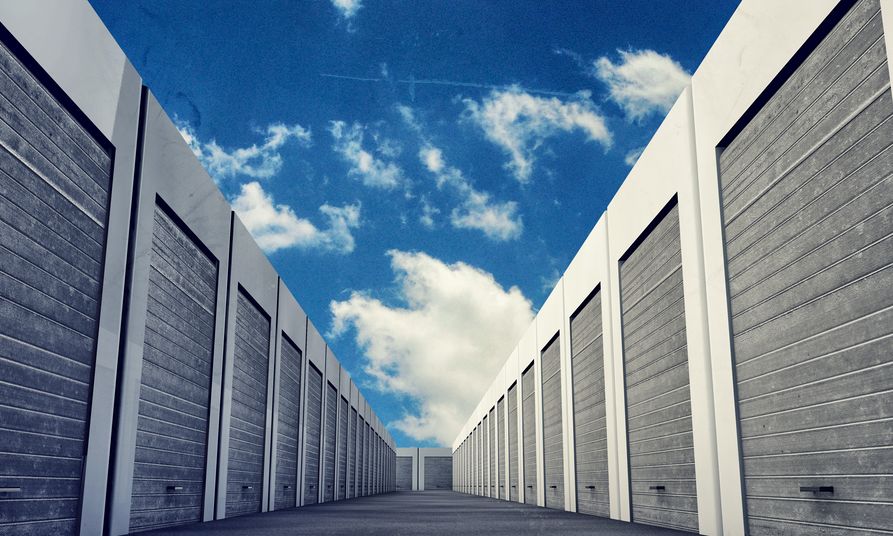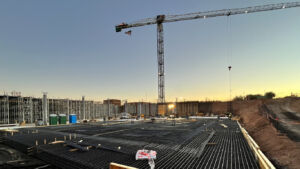Self storage is now as American (and as popular) as apple pie. In fact, there are currently more self storage facilities in the U.S. than all the Best Buy, Lowe’s, Home Depot, Walmart, McDonald’s and Subway locations combined. The 2011-2020 period was the third-most active decade in the history of self storage development, with over 295M square feet of self storage space coming online across the nation — or about 20% of the total existing inventory in the US — per Yardi Matrix data.
READ ALSO: Phoenix ranks No. 6 among hottest multifamily markets
The self storage industry is closely related to life events and socio-economic factors: Moving, home improvement, downsizing and changes in household composition are just some of the reasons why people turn to self storage. The needs created by these situations are major drivers of the self storage market. Add the recent apartment boom to the mix and you have the perfect context for a flourishing industry that’s poised for even more development. Both Dallas and New York, which saw the most apartments added to their local inventories in the last decade, also had the most self storage space delivered over the same time span.
As the renter cohort is swelling across all major US cities, we wanted to see where people have easy access to storage space as a way to enjoy living in uncluttered homes. To find out which places offer the best self storage options to apartment renters, we’ve researched both multifamily and self storage development trends in the 100 biggest US metros between 2011 and 2020.
Is self storage keeping up with urban renters’ space needs? Dallas & Houston march strong, yet N.Y. is largely undersupplied, keeping pressure on rents
After a slow start at the beginning of the last decade, self storage construction boomed near the closing years of the decade, largely supported by consistent multifamily development. Both sectors peaked in 2018, when over 57M square feet of self storage came online and more than 353,500 units were delivered in one year. Even when apartment construction seemed to quieten down in the second half of the decade, self storage continued growing at a rapid pace as people prioritized location versus space in their apartment choices. Self storage consolidated itself as a way to enjoy living large even when apartment sizes are shrinking.
Even as the 2020 pandemic caused significant disruptions across all sectors of the economy, self storage emerged relatively unscathed. Demand came from both traditional and new sources, allowing the industry to see further development which eventually translated into more options for renters. Moving remained a strong driver of demand, with most urban centers seeing high renter mobility as many people searched for more favorable housing options, whether seeking respite in suburban settings or access to wider job markets in larger employment hubs. Additionally, many employers who had to re-arrange office or restaurant space to allow physical distancing have created new demand for self storage, in addition to displaced students and newbie RV lifestyle enthusiasts who embraced this way to enjoy vacations amid pandemic restrictions.
Fast-growing Dallas-Fort Worth tops efforts to respond to growing housing and self storage needs
Some of the most in-demand metros have naturally seen the largest apartment and self storage space additions. Over the past decade, the Dallas population grew by 1.2 million people, per U.S. Census data, attracted by the numerous job opportunities. But more than a solid employment market, D-FW also features a balanced cost of living paired with high quality of life and cultural diversity. As a result, the influx of newcomers landing in Dallas prompted developers to add more than 173,000 rental units – albeit of smaller size than historical trends. In fact, among the largest Texan cities, Dallas lost the most apartment space over the last decade. This has only fueled further self storage development, with D-FW having seen the addition of more than 16.2M square feet of self storage during 2011-2020 – more than any other US metro in terms of overall volumes.

The New York metropolitan area has always been a hot market both for apartment and self storage construction, mainly supported by the high mobility of its people. In fact, 2011-2020 saw the addition of over 140,000 apartments to the New York inventory, the second-biggest number of new apartments in the country for the decade.
The Big Apple might be fast on track to build new housing, but much like Dallas, building more often means building smaller. The need for extra space becomes apparent in the case of NY as well, with developers boosting self storage construction efforts. Consequently, over 15.7M square feet of self storage space were built in New York between 2011-2020, the second-highest self storage construction volume in the US during that period. Anecdotally, the market does not seem to keep up with population growth. And despite its historically high level of deliveries, the self storage market is heavily undersupplied, with only 3.3 square feet per capita, below the national benchmark of 7 square feet per person. Supported by strong demand, self storage rents in New York are some of the most expensive in the nation. The average street rate for a self storage unit in New York is now $185/month, with only San Francisco, Los Angeles and Honolulu displaying higher rents.
Houston, on the other hand, which features approx. 10.8 sq. ft. of self storage space per capita, has much lower street rates. A standard storage unit in Houston now goes for $86. Houston has added no less than 14M square feet of self storage space over the last decade, the third-biggest self storage space volume increase in the US.
Top Metros for Self Storage and Multifamily Construction Volumes (2011-2020)
Washington, DC is known for its big-city entertainment options and ample career opportunities – including a competitive average wage that ranges around $77,200, up 23% over the decade – which all provide the perfect mix for a desirable lifestyle. It’s easy to see why in the past 10 years, more than 630K people made the D.C. metro region their home. Roughly 117,500 apartment units have been added to the local market, the fourth-largest jump in the supply of any large US metro seen between 2011-2020. Consequently, self storage options have grown and diversified as well, with new facilities popping up across the metro area. No less than 77 self storage facilities offering a total of 6.2M square feet, have been delivered in the same 10-year period.
Living in or around LA doesn’t come cheap, even with a growing income (the average wage, now at $63,660/year, is up 24% over 2011-2020), but the shiny Cali lifestyle is still coveted by many across the US. Over 385,900 people became Angelinos in the past decade, spurring residential construction which eventually resulted in the addition of over 100,600 apartment units. On the self storage front, we saw the addition of about 5.1M square feet of self storage space for the same time period. Despite this impressive level of self storage construction, LA is another undersupplied market, with only 4.5 square feet of storage space per capita, well below the national average. Both restrictive zoning regulations and land availability have put the brakes on self storage development in LA, which resulted in higher rent rates. An average self storage unit in LA now rents for $193/month.
With its tax-free status, cosmopolitan atmosphere and round-the-clock gorgeous weather, you can see why over 600,000 people moved to the Miami metropolitan area over the past decade. But have these newcomers had their space needs met? Miami in fact saw the delivery of over 88,800 units between 2011 and 2020. The local self storage sector responded well to this elevated level of construction, seeing its inventory swell by over 8M square feet of rentable space during the last decade.
Southern charm may still be drawing people to Atlanta but it’s mostly the metro’s employment opportunities that encouraged the massive residential development over the past decade. The impetus from the booming apartment market spilled into the self storage sector too. The Atlanta metro area added over 8.1M square feet of self storage space, making it the sixth-most active self storage market during the decade. The development trend continues in ATL as more than 1.3M square feet of storage space are planned to be delivered in 2021.





